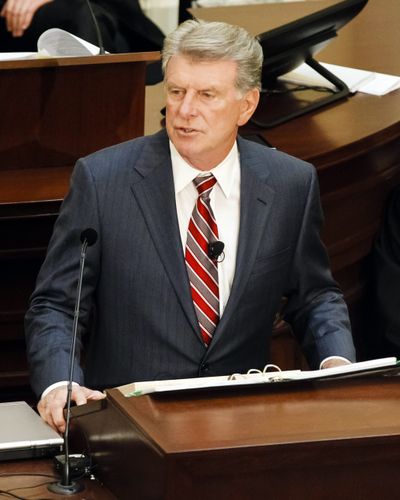Idaho debates worker raises

BOISE – Idaho has funded only one raise for state employees in the past five years, and lawmakers are balking at Gov. Butch Otter’s proposal to skip raises again next year.
Despite a state law that requires legislators to keep state worker pay and benefits competitive, pay levels have fallen far behind market rates. Some 20 percent of Idaho’s 25,000 employees make less than $20,000 a year, and 56 percent make less than $40,000. Overall pay is now 19 percent below market rates, according to the latest state report.
Audra Campbell, a former nurse’s aide at the Idaho State Veterans Home, told lawmakers this week that she loved working with veterans. Breaking into tears, she said, “Unfortunately, with the economy, I have given my resignation, because I can no longer afford to work at a job that I love to work at.”
The Otter administration says agencies have been able to patch together raises for some workers through salary savings, generated by things like leaving vacancies unfilled. This year, 52 percent of state employees got some kind of raise or bonus that way, Jani Revier, Otter’s budget chief, told a special legislative committee examining state employee compensation. Otter is calling for the same approach next year.
But Rep. Maxine Bell, R-Jerome, co-chair of the Legislature’s joint budget committee, said she’s troubled by that approach.
“Running a system this big on salary savings really troubles me, and I’m wondering if we’ve totally lost sight of our responsibility to fund the system that’s in place and count the people that are there and then do what we can.”
Sen. John Tippets, R-Montpelier, co-chairman of the Legislature’s joint committee on employee compensation, said his career in human resources taught him the pitfalls of that approach.
“There’s an incentive, then, to do things like maintaining vacancies as long as possible,” Tippets said, or to create promotions as a way to grant raises. “You start to erode your formal system you have for compensation, and these other informal processes start to encroach on your system.”
When the panel invited state employees to a public hearing this week, nearly a dozen testified, all pleading for an increase.
Kean Miller, a supervisor at the state electrical commission, said workers are doing what they call the “state shuffle,” shifting between agencies in order to get a raise. “The only way I will be able to get a raise is by applying for jobs in other agencies – so I’m applying,” she said. “All three of my people have told me they are applying for other jobs because they need more money. That has an impact and cost to the state. It costs to spend time to recruit, to hire, to train.”
Teri Gormley said after 10 years as a state employee, she makes $13 an hour. “I currently spend no less than 50 percent of my time trying to train new administrative staff,” she said. “They realize they’re not going to get a raise, and they go elsewhere.”
An official with the Idaho Commission for Libraries said one longtime employee makes only $8 an hour despite decades on the job.
Rep. Ron Mendive, R-Coeur d’Alene, who’s serving on the joint employee compensation committee, was moved by the testimony.
“It’s compelling. Granted, you can’t make ends meet on those numbers and support a family,” he said. “I’ll do whatever we can do. I’d love to see the economy turn around. The lower end, they’re struggling. There’s no question their concerns are real and their problems are real.”
Granting state workers a 2 percent raise would cost the state general fund $10.7 million next year.
Revier said the governor proposed no raises because the state will have to spend more than $12 million next year for increased health insurance costs for state workers. The workers, too, will see a hike in their contributions toward insurance, meaning that without raises their take-home pay next year will fall.
While Otter has proposed no money for raises, he has proposed depositing an additional $71 million beyond statutory requirements into various state rainy-day funds, to bring total state savings accounts to more than $273 million. He’s also set aside $30 million for possible tax cuts for businesses and high-income earners.
Lawmakers are questioning some of those priorities.
Longtime Rep. Tom Loertscher, R-Iona, a conservative from eastern Idaho, said, “I’m a big fan of putting money in the stabilization accounts, but we may have to do a little bit of something different than the governor’s looking at.”